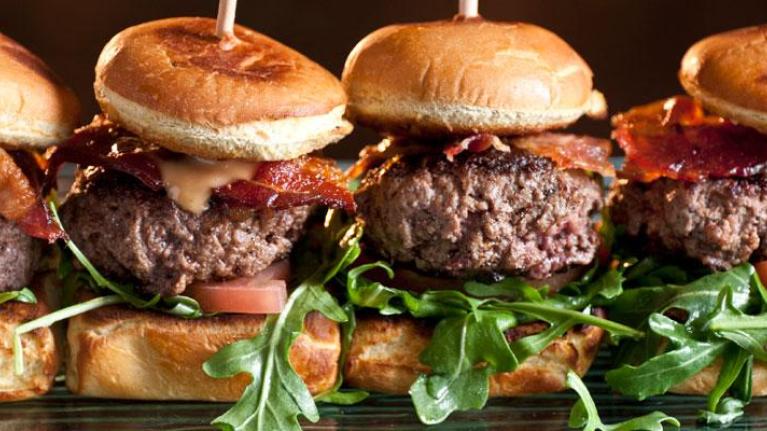
Adapt to All-Day Dining Trends
Make your menu craveable, shareable, and simple to maintain.
Around-the-clock lifestyles mean consumers’ schedules are no longer structured around conventional three-meal-a-day dining opportunities. Competitive Fast Casual restaurants are adapting their menus with offerings that blur dayparts: breakfast for dinner; re-portioning and reinterpreting main dishes as small plates and snacks; and tweaking classics for fresh appeal.
Adopt All-Day Breakfast
Audrey Markowitz, Market Intelligence Manager for Nestlé Professional, explains many consumers perceive breakfast items such as eggs to be satisfying, health-focused, and familiar, and they are willing to pay more for quality food. Plus, typical breakfast ingredients are simple to cross-utilize. Egg-based sandwiches, chicken and waffles, breakfast bowls, bacon avocado burgers, coffee options, and juice mocktails can be ordered throughout the day. Millennials, especially, skip breakfast at least once a week and opt to eat breakfast foods outside of morning hours.
Globalize Baked Goods
Consumers crave international influences throughout the day, but 40% would love to see authentic ethnic baked goods on the menu. From pain de campagne to Mexican sweet vanilla buns, diners look for both sweet and savory bakery specialties. For this crowd, slightly tweak ethnic baked goods for a recognizable treat with fresh appeal.
“If there is a way to take an on-trend or exotic flavor or menu item and pair it with something more familiar, diners overcome the perceived risk factor of trying something new.”
– Audrey Markowitz, Nestlé Professional, Market Intelligence Manager
One simple-to-incorporate ingredient is dulce de leche. Since dulce de leche is a caramel variant, operators can add it into desserts or beverages for a global flair with recognizable flavor.
Re-portion from Menu to Menu
“Portion sizes are an effective way for Fast Casual operators to adjust to all-day eating,” explains Markowitz. “They could add the menu item to a ‘small plates’ section and also offer a larger portion at lunch. For desserts, operators could have dessert shooters for guests who want something less indulgent.”
Re-portioning particularly captures crowds looking to eat many smaller meals throughout the day. Markowitz points out, “Many folks today aren’t eating a meal and a snack…they just graze.” She suggests letting patrons know they can have one or more small plates to share, enabling those who don’t know what they want to sample. With an array of small bites, operators not only make a strong first impression on diners but also test menu options.
Snacks are portable, sharable, and affordable. In fact, 94% of consumers admit to daily snacking and 91% report they consumed a beverage as a snack in the past day. According to Markowitz, snacking not only helps meet the nutritional needs of hectic work schedules, it has a social component for after-work and weekend get-togethers – a natural fit for Fast Casual dining.
Make Small Changes with Maximum Appeal
Fast Casual operators can keep up with shifting healthfulness perceptions by partnering with sustainable farms and local suppliers. While traditional food descriptors such as “fiber” and “vitamins” are effective for older generations, younger generations seek organic and sustainable products.
“When Millennials think ‘healthful,’ they think of fresh, real foods. They’re not as focused on sugar and fat levels but rather organic foods grown locally.”
– Audrey Markowitz, Nestlé Professional, Market Intelligence Manager
Another way for Fast Casual restaurants to showcase distinctive flavors is through reinvented condiments. Sriracha mayo, bacon jam, and Korean barbecue sauce have all grown over 150% on menus over the last 4 years. Markowitz says, “Fast Casual operators have an opportunity to infuse typical condiments with added flavor. It’s those little nuances and surprises that get people to talk. It’s also a nice value-add for the guest. Even though you may not charge more for that item, it helps improve the whole experience.”
All trademarks are owned by Société des Produits, Nestlé S.A., Vevey, Switzerland, or used with permission.
SOURCES: Datassential, International Concepts – Breakfast, June 2016 | Datassential, FoodBytes – Breakfast Keynote Report, November 2016 | Datassential, International Concepts – Global Baked Goods, December 2016 | Datassential, Snacking Keynote, March 2017 | Datassential, The New Healthy Keynote, April 2016 | Datassential, Sauces & Flavors, January 2017
